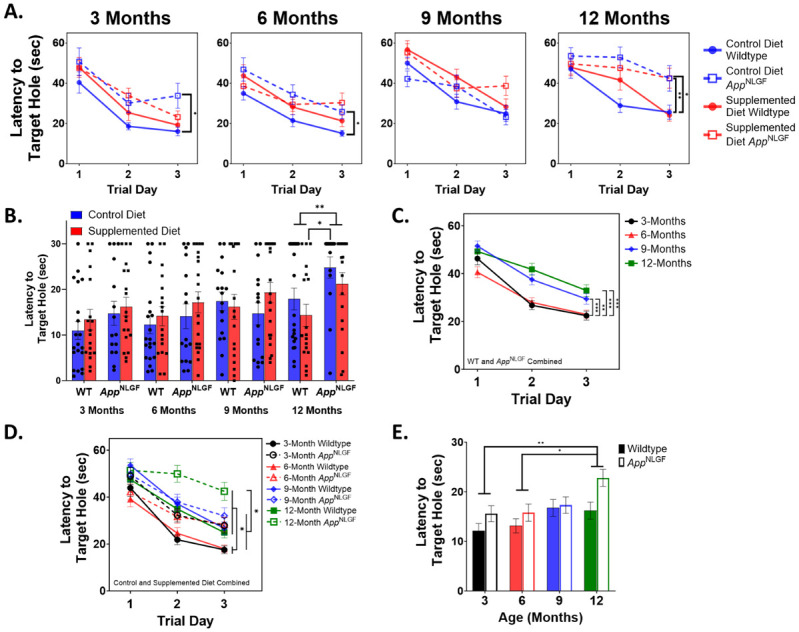Fig 1. AppNL-G-F mice are impaired in spatial learning and perinatal choline supplementation can prevent these deficits at early ages.

(A) AppNL-G-F mice at 3-, 6-, and 12-months of age take a longer time to reach the target hole than wildtype mice (3-Months- F(1, 64) = 9.99, p = 0.002; 6-Months- F(1, 67) = 5.75, p = 0.019; 12-Months- F(1, 62) = 14.40, p = 0.0003; repeated measures ANOVA). Perinatal choline supplementation prevented these learning deficits in AppNL-G-F mice at 3- and 6-months of age but not at 12-months. (B) No significant spatial memory recall deficits were found in 3-, 6-, or 9-month-old AppNL-G-F mice but there was a spatial memory recall deficit in AppNL-G-F mice at 12-months-old revealed during the 1-day probe test (F(1, 66) = 7.43, p = 0.008, ANOVA). 12-month-old AppNL-G-F mice that received the control diet were significantly slower at reaching the target hole during the 1-day probe test than 12-month-old wildtype mice that received the supplemented diet (Supplemented WT (14.32 ± 2.4s) vs Control AppNL-G-F (24.79 ± 2.7s) p = 0.025, Tukey). (C) Linear regression models adjusting for sex, perinatal diet, and genotype of latency to target hole measures during the trial days of the Barnes Maze revealed that 3- and 6-month-old mice are significantly faster at reaching the target hole than both 9- and 12-month-old mice (3-Months (31.96 ± 1.4s) vs 9-Months (39.10 ± 1.4s) p = 0.003; 3-Months (31.96 ± 1.4s) vs 12-Months (41.41 ± 1.5s) p<0.0001; 6-Months (30.94 ± 1.4s) vs 9-Months (39.10 ± 1.4s) p = 0.0004; 6-Months (30.94 ± 1.4s) vs 12-Months (41.41 ± 1.5s) p<0.0001; Tukey). Wildtype and AppNL-G-F were combined for these analyses. (D) Linear regression models adjusting for trial day, sex, and perinatal diet of latency to target hole during the trial days of the Barnes Maze show that young (3- and 6-month) AppNL-G-F mice perform more like older (9- and 12-month) wildtype mice than their age-matched counterparts. Significance bars shown indicate differences between 12-month-old AppNL-G-F mice and all other groups (p<0.03 for all, Tukey), as well as the differences between 3- and 6-month-old wildtype mice and all other groups (p<0.05 for all, Tukey). (E) In the 1-day probe test, 3- and 6-month-old mice perform significantly better than 12-month-old mice (3-Months (13.92 ± 1.1s) vs 12-Months (19.06 ± 1.1s) p = 0.007; 6-Months (14.44 ± 1.1s) vs 12-Months (19.06 ± 1.1s) p = 0.019; Tukey).
